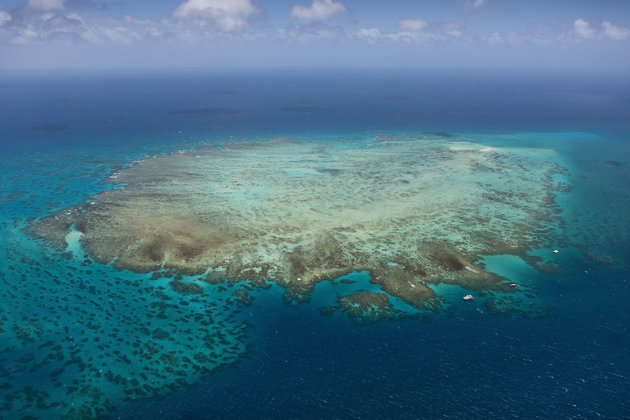The Great Barrier Reef has become arguably one of the biggest casualties of global warming with over a third of the reef dying in 2016.
The sun’s rays, combined with increasingly warm waters causes the corals to bleach and in severe cases completely die out.
Well one solution could be to reduce the effect of the sun on the water and in turn the reef by implementing a giant ‘sun shield’.
Developed by the University of Melbourne and the Australian Institute this ultra-thin film would sit on the surface of the water and create a barrier between the reef and the Sun.

(GERMANY OUT) Aerial View of Great Barrier Reef, Queensland, Australia (Photo by Reinhard Dirscherlullstein bild via Getty Images)
While the testing is still in the early phases scientists did record that the film had reduced the amount of light being absorbed by as much as 30%.
The ‘sun shield’ is 50,000 times thinner than a human hair and is made from calcium carbonate, the same material that corals actually use to create their hard skeletons.
In case you’re worried about any polluting effect it might have the thin film is 100% biodegradable so won’t pose a danger to other local wildlife.
While it sounds like the perfect solution, Great Barrier Reef Foundation Managing Director Anna Marsden points out that this sadly can’t work as magic bullet.
“It’s important to note that this is not intended to be a solution that can be applied over the whole 348,000 square kilometres of Great Barrier Reef – that would never be practical.” explains Ms Marsden.
“But it could be deployed on a smaller, local level to protect high value or high-risk areas of reef.”
“The concept needs more work and testing before it gets to that stage, but it’s an exciting development at a time when we need to explore all possible options to ensure we have a Great Barrier Reef for future generations.”
Originally Published by Huffington Post, continue reading here.

